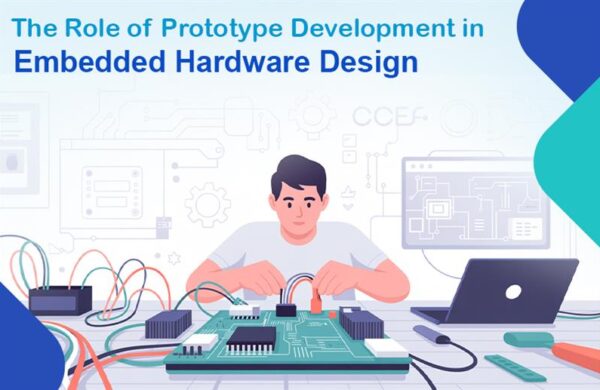Over the past few decades, 3D printing has evolved from a niche innovation into a powerful catalyst for transformation across industries. From manufacturing and healthcare to aerospace and consumer goods, the capabilities of 3D design machines and additive manufacturing continue to redefine how products are imagined, developed, and delivered.
As this technology matures, it promises faster production cycles, a wider range of material capabilities, greater automation, and deeper integration with Industry 4.0 frameworks. With the growing demand for customisation and speed in manufacturing, rapid prototyping with 3D printing is playing a central role in accelerating innovation across the globe.
Let’s explore how the future of 3D printing is unfolding and what it means for industries worldwide.
The Evolution of 3D Printing
Originally developed in the 1980s as a method for concept modelling and early-stage design, 3D printing, also known as additive manufacturing, has grown into a comprehensive manufacturing solution. Today, it enables on-demand production of intricate geometries and functional parts that are otherwise difficult or impossible to manufacture using traditional subtractive methods.
The core of this process involves layer-by-layer construction of objects from digital 3D models. Over time, technological progress in hardware, software, and materials has vastly expanded the range of applications and enhanced performance in terms of speed, precision, and material variety.
Key Trends Shaping the Future of 3D Printing
1. Expansion of Material Capabilities
One of the most promising frontiers in 3D printing is the diversification of usable materials. While early printers were limited to thermoplastics and resins, the technology now supports:
- Advanced metals like titanium, stainless steel, and Inconel for aerospace and defence components
- High-performance polymers for medical devices and consumer electronics
- Ceramics and composites with enhanced thermal and mechanical properties
- Biodegradable and sustainable materials aligned with green manufacturing goals
This broadening spectrum of materials enables manufacturers to meet stringent industry requirements for strength, temperature resistance, and durability.
2. Accelerated and Scalable Production
Historically, 3D design machines were favoured for prototyping due to their flexibility and speed. However, technological advances such as multi-laser systems, continuous printing methods, and hybrid manufacturing are pushing additive manufacturing into the realm of end-use production.
As post-processing techniques become more automated and quality control systems more refined, 3D printing is poised to support low- to mid-volume production at commercially viable speeds and costs.
3. Integration with AI and Digital Manufacturing
As 3D printing technologies evolve, they’re increasingly integrated into broader digital manufacturing ecosystems. The convergence of AI, machine learning, and IoT is giving rise to smart printing environments that:
- Optimise part designs for strength and efficiency
- Automate print parameter adjustments
- Predict maintenance needs and reduce downtime
- Monitor print quality in real time
Such integration reduces errors, enhances output consistency, and ensures efficient use of resources throughout the production lifecycle.
The Rise of Rapid Prototyping with 3D Printing
What is Rapid Prototyping?
Rapid prototyping refers to the accelerated creation of functional models or parts directly from digital designs. By using 3D printing, companies can go from concept to physical prototype in a matter of hours or days, dramatically reducing development time compared to traditional tooling or CNC machining.
Key Benefits
- Reduced Time to Market: Concepts are transformed into tangible models much faster
- Increased Design Freedom: Complex shapes and details are easily achievable
- Cost-Effective Iteration: Designers can test and refine multiple versions without the need for expensive moulds
- Improved Feedback Loop: Early prototypes enable real-time feedback from users, stakeholders, or clients
As a result, rapid prototyping enhances product development agility and supports a more collaborative and customer-centric design process.
Industry-Specific Applications of 3D Printing
Aerospace and Defence
3D printing allows aerospace engineers to manufacture lightweight, strong, and highly complex components. This leads to improved fuel efficiency and reduced part count in critical systems such as turbine blades, brackets, and structural parts.
Automotive Industry
From concept models and interior components to jigs and fixtures for assembly lines, additive manufacturing is helping automotive companies shorten lead times, lower production costs, and increase product customisation.
Healthcare and Medical Devices
The healthcare industry is leveraging 3D design machines to produce custom prosthetics, dental appliances, surgical tools, and even patient-specific implants. These personalised solutions improve clinical outcomes while reducing dependency on traditional supply chains.
Consumer Goods
Additive manufacturing is enabling consumer brands to offer personalised, on-demand products. From fashion accessories to ergonomic wearables, 3D printing supports batch-of-one production models that are aligned with modern customer expectations.
Environmental and Economic Impact
One of the significant advantages of additive manufacturing is its ability to minimise waste. Unlike traditional methods that involve cutting away excess material, 3D printing uses only the material needed for the part itself.
Additionally, the potential for localised manufacturing reduces the need for large-scale shipping, cutting down on carbon emissions and logistical overhead. Distributed 3D printing hubs can also lead to cost savings, supply chain resilience, and just-in-time production for critical industries.
Challenges Ahead and Industry Response
Let’s explore how the future of 3D printing is unfolding and how it will impact industries worldwide.
- Material Consistency: Variations in material quality can affect final product integrity
- Post-Processing Complexity: Many parts still require cleaning, curing, or surface treatment
- Cost of Equipment: Industrial-grade printers and materials remain costly for small manufacturers
- Workforce Skill Gap: Skilled professionals with knowledge of both design and operation are in short supply
To overcome these obstacles, the industry is focusing on:
- Certification and standardisation of materials
- Automation of post-processing workflows
- Research into affordable and scalable solutions
- Investment in training and education programs for designers and engineers
Why Choose Monarch Innovation for 3D Printing Services in India?
At Monarch Innovation, 3D printing is more than a service; it’s a strategic enabler for innovation. Here’s what sets them apart:
- End-to-End Expertise: From ideation and 3D design machines to prototyping and production
- Latest Technology: Access to state-of-the-art 3D printers and software
- Client-Centric Approach: Custom solutions tailored to your industry needs
- Experienced Team: Engineers and designers with deep domain expertise
- Faster Turnaround: Rapid delivery without compromising on quality
Whether you’re looking to create a product prototype, develop custom tooling, or explore rapid prototyping with 3D printing, Monarch Innovation is your trusted partner.
Final Thoughts
The future of 3D printing is not only about faster machines or better materials, it’s about reimagining the way we make things. As this technology becomes more accessible and sophisticated, businesses that adopt it strategically can unlock new levels of customisation, efficiency, and innovation.
From concept models to production-ready parts, from consumer goods to aerospace components, the possibilities with 3D design machines and additive manufacturing are virtually limitless.
With strong momentum in areas like rapid prototyping with 3D printing, material science, and AI-powered automation, the next chapter in digital manufacturing is already underway.
Get in touch with Monarch Innovation today for expert 3D printing services in India and stay ahead of the curve.





